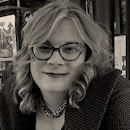CANCELED: Through a Forest of Speckles: Imaging Planets Around Nearby Stars
- Speaker
-
 Rebecca Oppenheimer, Ph.D.Curator and Professor, Department of Astrophysics, Division of Physical Sciences, American Museum of Natural History
Rebecca Oppenheimer, Ph.D.Curator and Professor, Department of Astrophysics, Division of Physical Sciences, American Museum of Natural History
Presidential Lectures are a series of free public colloquia spotlighting groundbreaking research across four themes: neuroscience and autism science, physics, biology, and mathematics and computer science. These curated, high-level scientific talks feature leading scientists and mathematicians and are designed to foster discussion and drive discovery within the New York City research community. We invite those interested in these topics to join us for this weekly lecture series.
The objects orbiting nearby stars — such as exoplanets and other substellar beasts like gas and dust — can be millionths to hundredths of billionths of times as bright as their host stars. These objects are also in close angular proximity with their host stars due to their distance from our solar system, making them difficult to see. Removing the star’s glare — which often manifests as bright, varying patterns of speckles around the central star — is critical to seeing the surrounding objects and determining their orbits, measuring their atmospheric characteristics and understanding their properties.
In this lecture, Rebecca Oppenheimer will provide an overview of how astronomers over the last 25 years have pioneered techniques to solve the glare problem and mitigate the effects of the forests of sparkles hiding the nature of nearby planetary systems. As a result, astronomers are beginning to open the full zoo of exoplanets to the scrutiny of physics and chemistry (and perhaps biology). Her work has advanced several aspects of this problem, from advanced coronagraphy to speckle suppression to total manipulation of the electric field of the light from the stars that enters a telescope. She’ll describe these efforts and the exciting science they have enabled.
To attend this in-person event, you will need to register in advance and provide:
- Acceptable proof of vaccination (vaccine card/certificate, a copy or photo of vaccine card/certificate or electronic NYS Excelsior Pass or NJ Docket Pass)
- Photo ID
- Eventbrite ticket confirmation email with QR code
- Simons Foundation Health Screening Questionnaire approval email
Guests are expected to complete these requirements each time they visit the Simons Foundation and entrance will not be granted without this documentation.
On-site registration will not be permitted. Walk-in entry will be denied.
